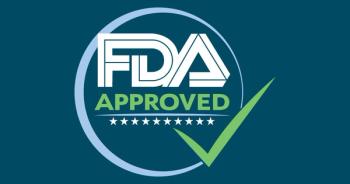
T2D risk increased with increased HbA1c levels among adolescents with overweight, obesity
Investigators found that higher baseline HbA1c was associated with greater T2D risk.
In a study among adolescents with
The study, published in JAMA Network Open, stated prevalence of prediabetes in adolescents aged 12 to 19 years increased from 12% to 28% from 1999 to 2018. This increase has been paralleled by an increase in childhood obesity.1
According to updated, March 2024 numbers from the World Health Organization, worldwide adolescent obesity has quadrupled since 1990. In 2022, 37 million children under the age of 5 years were overweight, and more than 390 million children and adolescents aged 5 to 19 years were overweight in the same year. Of these, 160 million were living with obesity.2
The investigators, led by Francis M. Hoe, MD, of the Department of Pediatric Specialties, Kaiser Permanente Roseville Medical Center, Roseville, California, sought to1:
- Determine T2D incidence by baseline HbA1c levels in a diverse group of adolescents with overweight and obesity
- Identify clinically relevant HbA1c thresholds associated with increased risk of T2D to optimize surveillance of high-risk populations.
The study population was made up of adolescents aged 10 to 17 years with a body mass index (BMI) at or above the 85th percentile, had HbA1c measured during 2010 to 2018, and did not have preexisting diabetes. This retrospective cohort was conducted using data from January 1, 2010 to December 31, 2019, at Kaiser Permanente Northern California (KPNC). The health care delivery system provides 4.4 million members in northern California, with approximately one-fifth of these individuals aged younger than 20 years.1
BMI, calculated as weight in kilograms divided by height in meters squared, had the following categories for age and sex1:
- Overweight: BMI 85th to <95th percentile
- Obesity: BMI ≥95th percentile
- Moderate obesity: BMI 100% to <120% of 95th percentile
- Severe obesity: BMI ≥120% of 95th percentile
“The main outcome was incident T2D during follow-up through 2019, including cumulative incidence and multivariable hazard ratios (HRs) with 95% CIs using Cox proportional hazard regression analyses,” wrote the investigative team.1
The study featured 74,552 adolescents with a mean age of 13.4 (2.3) years (50.6% female). Of all individuals in the study, 26.9% had overweight, 42.3% had moderate obesity, and 30.8% had severe obesity. For race and ethnicity, 17.6% identified as Asian or Pacific Islander, 11.1% as Black, 43.6% as Hispanic, 21.6% as White, and 6.1% were “other” or unknown race or ethnicity.1
Amid follow-up, 698 (0.9%) individuals developed diabetes, of which 626 (89.7%) had T2D. A total of 72 individuals (10.3%) had type 1 diabetes, secondary, or other diabetes were censored.1
T2D incidence overall was 2.1 (95% CI, 1.9-2.3) per 1000 person-years, with a 5-year cumulative incidence of 1.0% (95% CI, 0.9%-1.1%). “Higher baseline HbA1c (from <5.5% to 5.5%-5.6%, 5.7%-5.8%, 5.9%-6.0%, 6.1%-6.2%, and 6.3-6.4%) was associated with higher 5-year cumulative T2D incidence (from 0.3% [95% CI, 0.2%-0.4%] to 0.5% [0.4%-0.7%], 1.1% [0.8%-1.3%], 3.8% [3.2%-4.7%], 11.0% [8.9%-13.7%], and 28.5% [21.9%-36.5%], respectively),” the study authors listed.1
Additionally, the investigators found that higher baseline HbA1c was associated with greater T2D risk (reference [HbA1c <5.5%]: HR, 1.7 [95% CI, 1.3-2.2], 2.8 [2.1-3.6], 9.3 [7.2-12.1], 23.3 [17.4-31.3], and 71.9 [51.1-101.1], respectively).1
Results demonstrated that independent indicators of T2D were also higher BMI category, older age, female sex, and Asian or Pacific Islander race (HR, 1.7 [95% CI, 1.3-2.2]). Black race or Hispanic ethnicity, compared with White race, were not independent indicators of T2D. Incremental risk associated with higher HbA1c was greater for Asian or Pacific Islander and White adolescents than for Black and Hispanic adolescents in stratified analyses.1
The investigators concluded that T2D risk among adolescents with overweight and obesity increased substantially with baseline HbA1c above 6.0%, with risk varying by BMI, age, sex, and race and ethnicity. “These findings suggest that diabetes surveillance in adolescents should be tailored to optimize identification among high-risk subgroups.”1
Reference:
- Hoe FM, Darbinian JA, Greenspan LC, Lo JC. Hemoglobin A1c and Type 2 Diabetes Incidence Among Adolescents With Overweight and Obesity. JAMA Netw Open. 2024;7(1):e2351322. doi:10.1001/jamanetworkopen.2023.51322
- Obesity and overweight. World Health Organization. Updated March 1, 2024. Accessed May 15, 2024. https://www.who.int/news-room/fact-sheets/detail/obesity-and-overweight
Newsletter
Access practical, evidence-based guidance to support better care for our youngest patients. Join our email list for the latest clinical updates.














